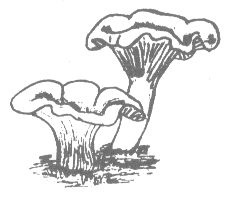 I promised my class that by the end of the semester they'd know why flamingos are pink and Cheetos are orange. In that vein, last week's quiz included a question asking them to figure out which of two labels belonged on a bottle of reddish violet solution and which went on the yellowish solution.
I promised my class that by the end of the semester they'd know why flamingos are pink and Cheetos are orange. In that vein, last week's quiz included a question asking them to figure out which of two labels belonged on a bottle of reddish violet solution and which went on the yellowish solution.One student correctly labled the bottles, but wondered if my choice of compounds was a red herring. She noted that the name of the compound that she predicted would produce the reddish solution (canthaxanthin) meant "yellow" in Greek. I told her that, in fact, I hadn't known that xanthin meant yellow and wasn't trying to mislead them!
This sent me on a hunt to discover why a reddish compound was named for "yellow". Turns out canthaxanthin is named for the mushroom species from which it was first extracted (Cantharellus cinnabarinus) and the Greek for yellow (xanthin). Cantharus is Latin for a two horned drinking cup, which the fungus resembles. The color can tend toward the orange, so that may be the source of the "yellow" in the name.

















A more appropriately named compound is zeaxanthin. It is yellow & comes from yellow corn (Zea mays). It might also be present in marigolds.
ReplyDeleteMore quantum chemistry examples!
ReplyDeleteI saw the picture and thought, "Those look like chanterelles ... Oh. Of course -- cantharellus, chanterelle." Sure enough, cantharellus is the botanical name for the chanterelle genus. The fresh chanterelles I've seen were all yellow, and apparently most species are yellow or yellowish, the orange-to-reddish cinnabar chanterelle (which I've never seen, let alone eaten)being a notable exception. I betcha the two-horned drinking cup resembled the yellow mushroom, rather than vice-versa. And the color of the species of chanterelle from which your compound was derived is probably better described by the "cinnabarinus" part of the name than by the "cantharellus" part -- although naming the compound that way would hardly be any less misleading!
ReplyDeleteI did think about the fact that the cinnabar in the name of the mushroom was likely to point to the color, while the cantharellus pointed to the shape. As far as I can determine the Latin name for the cup pre-dates the mushroom!
ReplyDelete